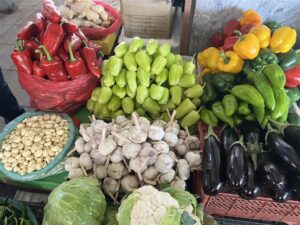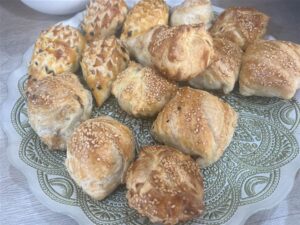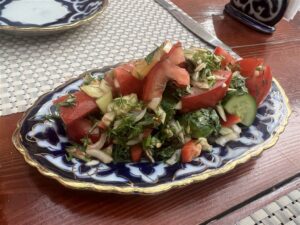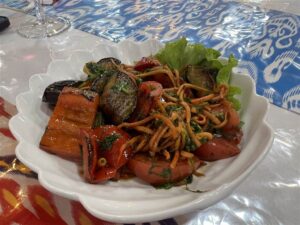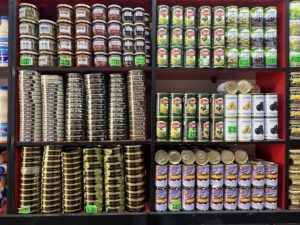Ubiquitously Uzbekistan – The Wonders of Uzbek Food
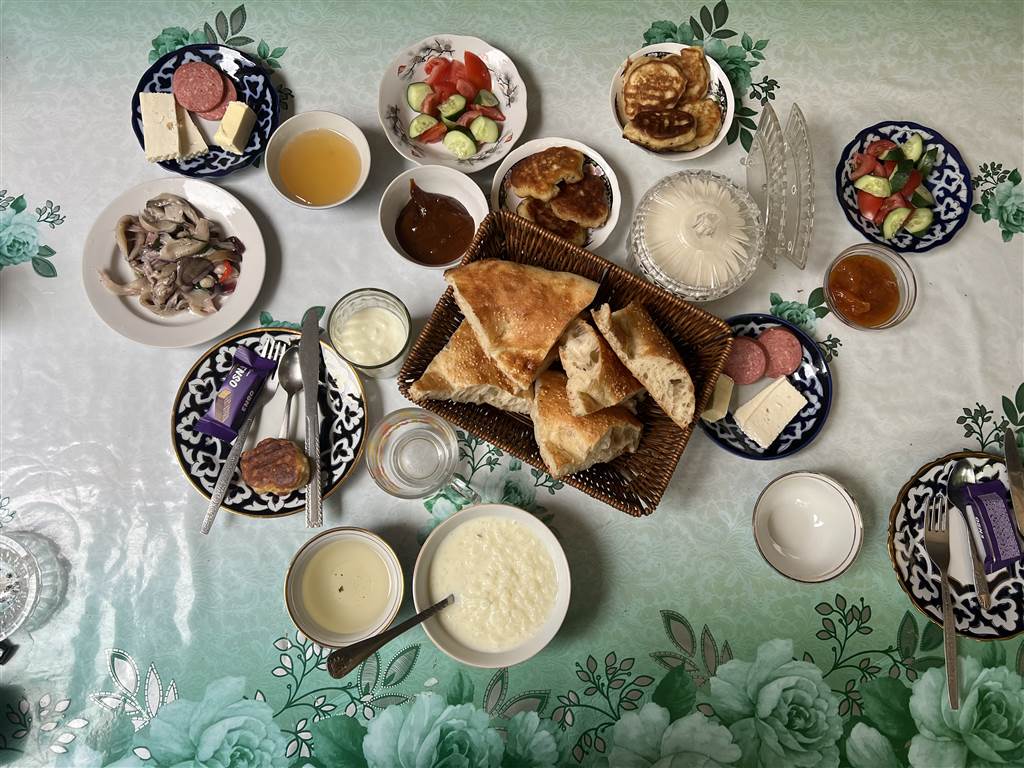
Let us pause here for a much-loved topic: the wonders of Uzbek food. Before going to Uzbekistan, I had no knowledge whatsoever of the food that Uzbeks eat. I figured that, first, as long as I do not have craving for pork (and I do not), then I would be fine there. Secondly, my problem is that I do not eat mutton, but I assumed that chicken would be plenty in any Muslim culture, and that was, for the most part, true. As it turned out I absolutely loved the food I had in Uzbekistan despite a general avoidance of mutton.
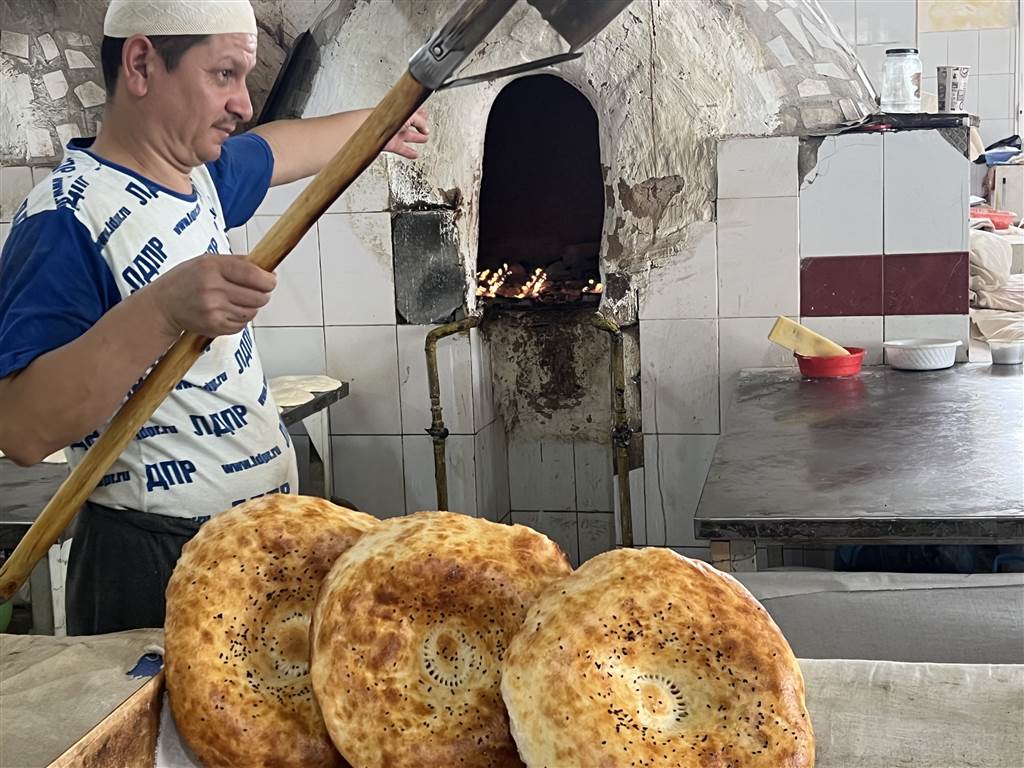
Dining in Uzbekistan was exciting, first and foremost, because the generous use of middle eastern spices really places tourists from the western world into the realm of what we commonly think of as exotic. The olfactory stimulation was immediate and left an indelible impression. The stimulant-in-chief would be cumin, the most pungent, and perhaps overpowering, spice of all.
Because we stayed in hyper-touristy places that are certainly after the business, they knew very well the culinary preferences of the foreigners. Also because they are certainly after the business, we had no trouble finding food anywhere even during the Ramadan. But this would be a point to note for people who want to visit some less popular places in Uzbekistan, in terms of the time of the year to go.
The Plov
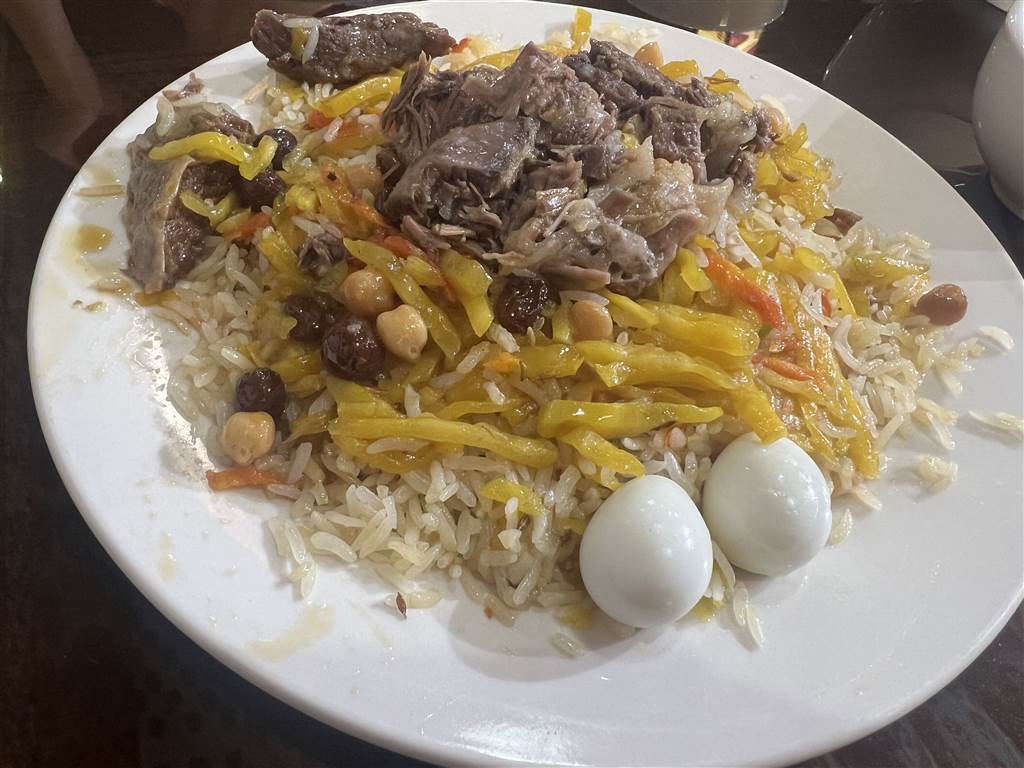
When speaking of Uzbek food, the first item that must be featured is the Plov. Ask any Uzbek and he or she will likely tell you that it is the national food of Uzbekistan. Granted, the Plov it is also eaten throughout the other Central Asian countries with slightly differing renditions, the Plov is, properly speaking, a uniquely Central Asian staple.
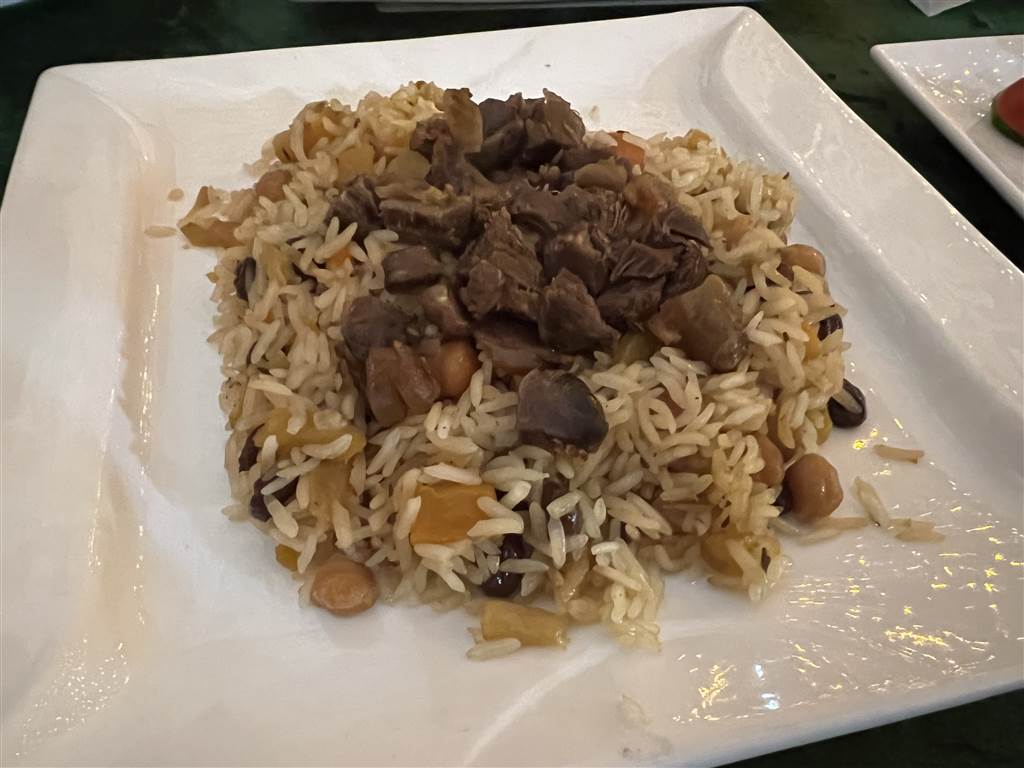
There is usually a serving of meat on the fried rice (allow me to call it that). Traditionally, the rice is cooked in the pan itself. The shredded carrots are fried first with onions, then adding some turmeric to give it the typical yellow hue. The souls of the fried rice are special Uzbek dried raisins (a type that is not sweet), and of course, cumin. When the server sets down the meal you should smell the fragrance right away, and you will dig in like there is no tomorrow.
Shashlik, Anyone?
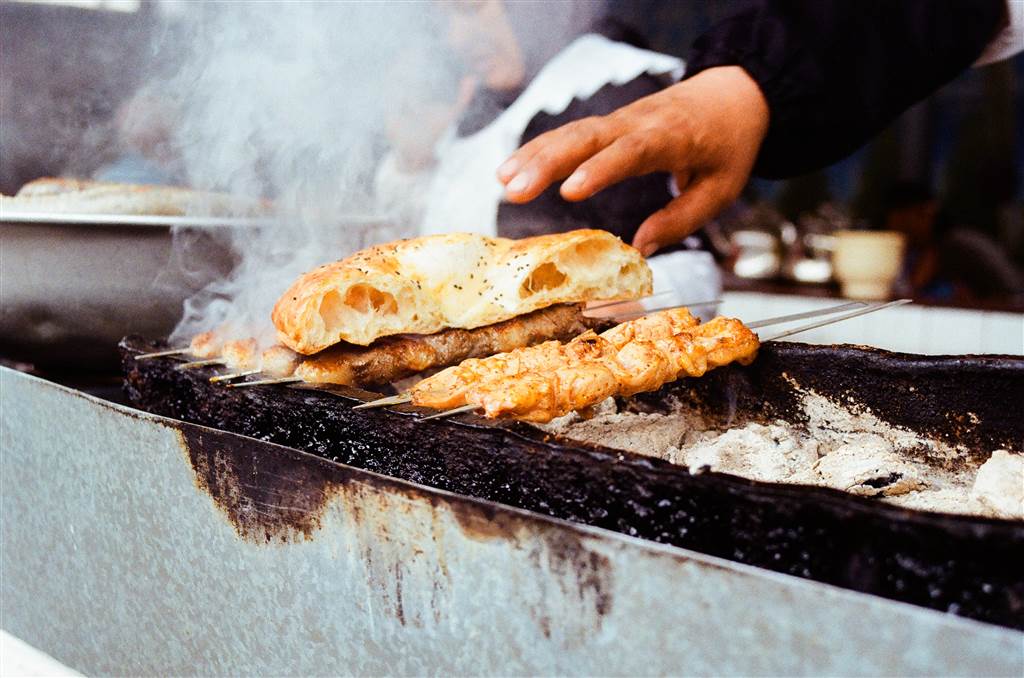
The most notable way in which the meats of Uzbekistan are served is the shashlik, which is the local word for grilled meat on skewers. Needless to say, the generous spices give the meat its complex flavors. The grilling on open fire ensures the tenderness and juiciness of the meat.
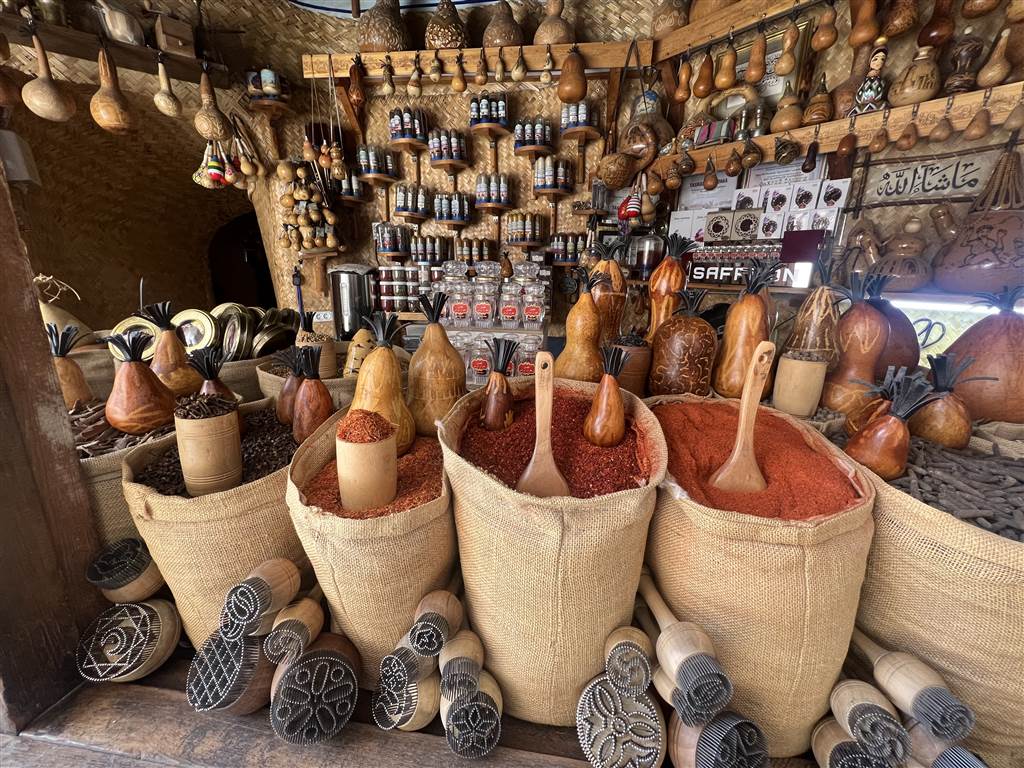
One skewer or two is usually what the Uzbeks would get, but when we got greedy, we would order a whole mouthwatering platter. In Uzbekistan, the shashlik most commonly feature chicken, mutton and beef, but we have also seen a wider variety like fish and bread. I think a generous amount of paprika and cumin is used for its seasoning. In fact, I packed a bag of custom-mixed Uzbek shashlik seasoning home. There will be discussion of our experience at a Bukhara spice shop in a later entry.
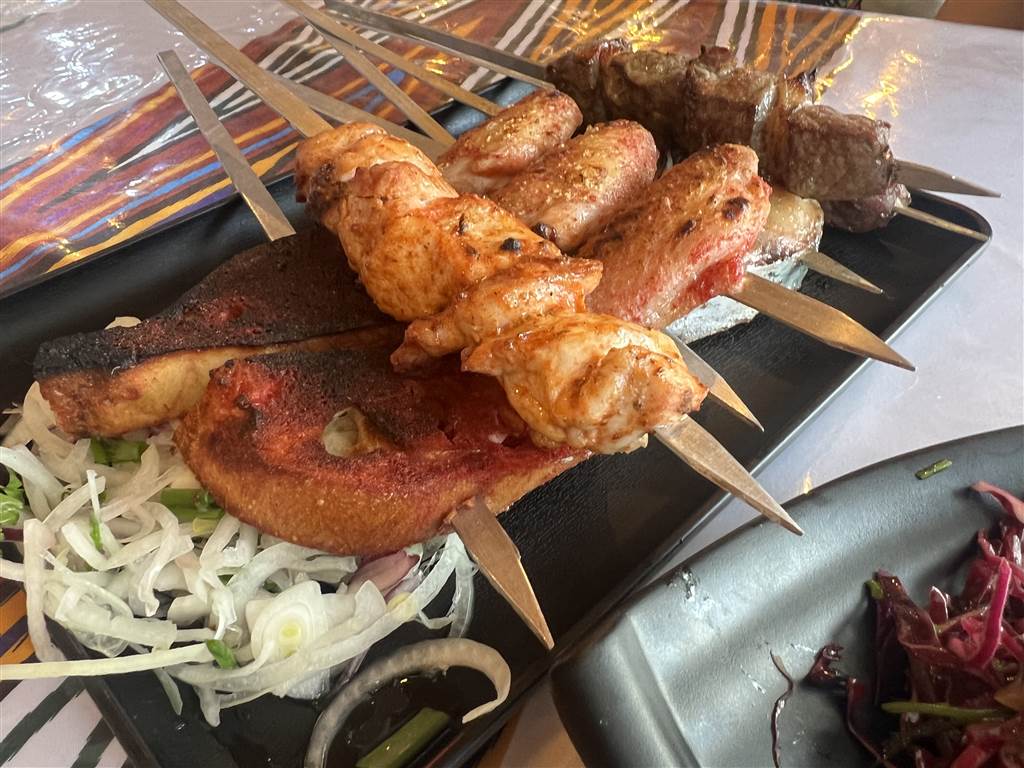
The Uzbek Breakfast

I am very sure that this scrumptious portion of Uzbek breakfast is only served on the tourists and guests, but do let me describe the platter of wonderful food. For starch, there is always the unleavened bread of Uzbekistan. They are a little tough, but going with butter, plum or apricot jam and honey, they are very good. Then comes a porridge that is usually sweet with condensed milk, or some kind of sweetened dairy. For meats, there certainly is ham or sausage. For other dairy items, yogurt is also on the side, as well cheese sices. Eggs are commonly featured, usually as omelet. There is always some sort of salad as well, featuring usually tomatoes, onions, cucumbers and dill. Finally, there are also some pastry items, such as beef or sausage puffs. You also have a selection of fruits to finish your breakfast with. Of course, you are free to work through this whole table of food in any order you like. I tend to start mine with hot items.
The Lachman

We understood Lachman right away because it is very similarly pronounced with “lamian” in Mandarin Chinese, meaning pulled noodles. I do not in fact know if these noodles are hand-pulled, but they do have a very chewy texture and they are very satisfying. The noodles are cooked usually in a meat broth. I have a fear for mutton’s gamey taste, and it would usually come out very pronounced in soup, so when I ordered Lachman, I either made sure it came with a beef or chicken broth, or asked specifically for veggies only. It is a very common dish in Uzbekistan, just like noodles in China.
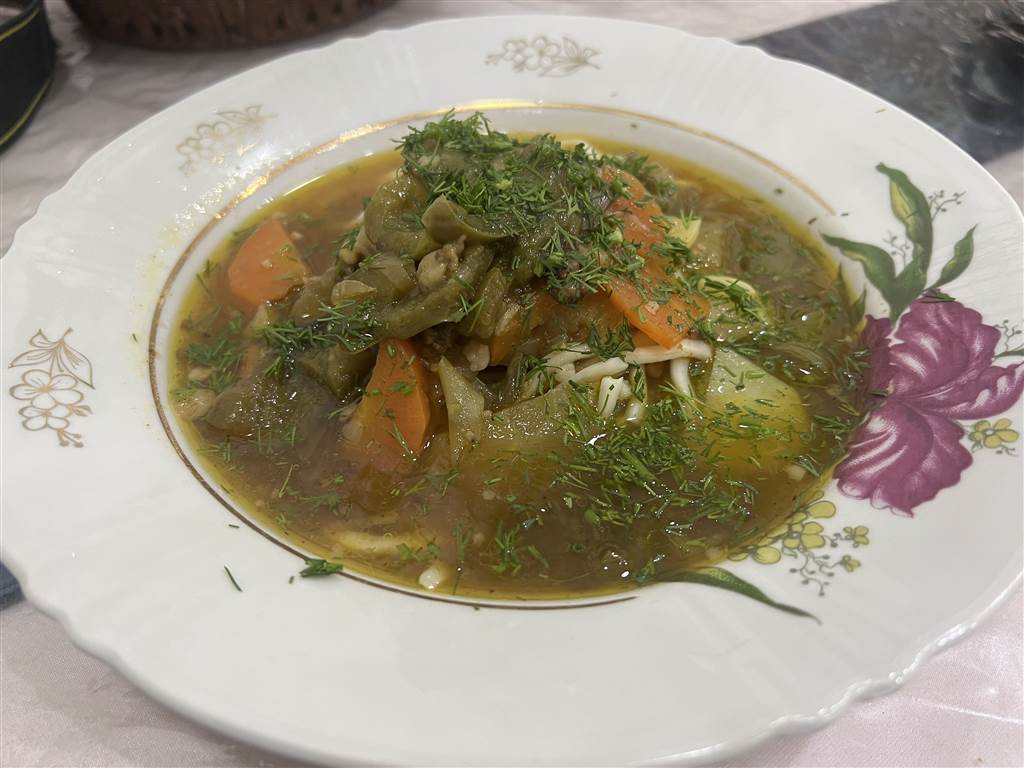
In Bukhara, we had a fried version of Lachman, topped with a fried egg with runny yolk and it was heavenly. It is a must-try in Bukhara.
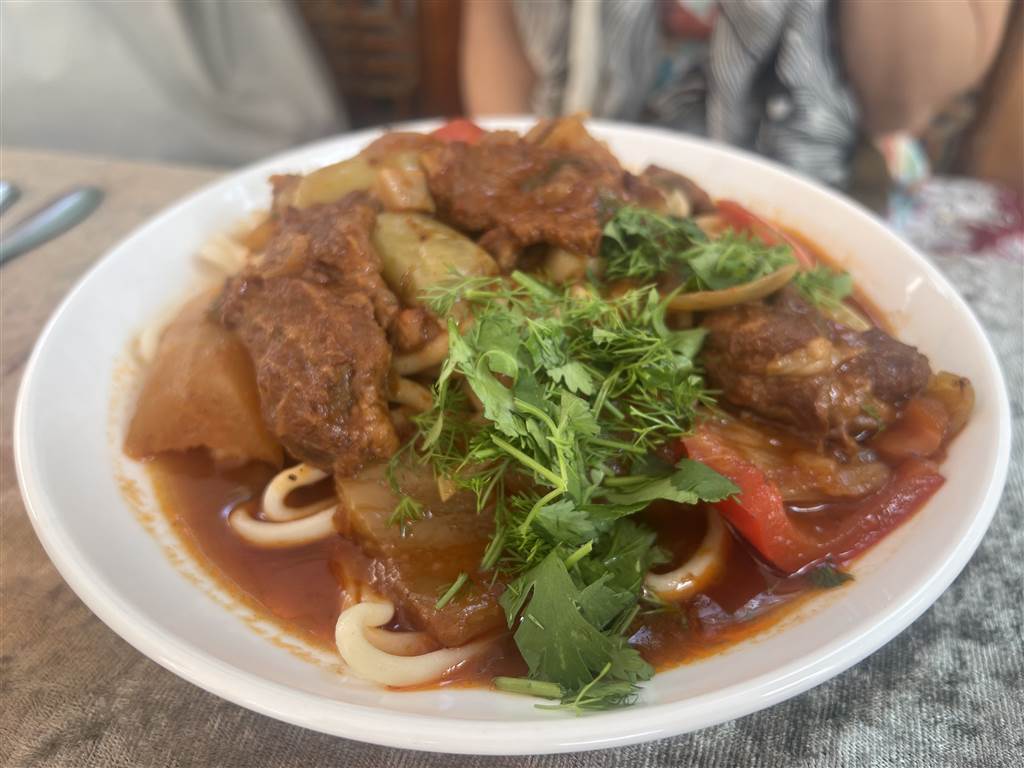
The Dolma
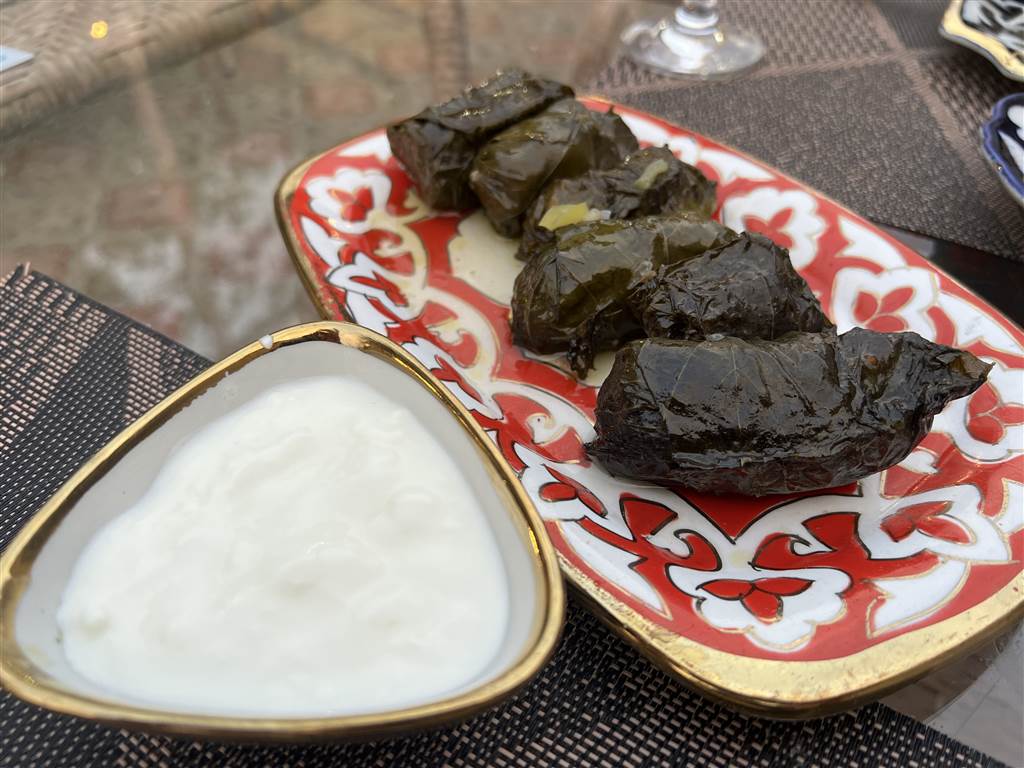
The dolma reminds me a lot of the Lebanese stuffed grape leaves. And I also assume that the preparation is similar, with ground meat wrapped in grape leaves. Although in Bukhara we made sure that the meat was beef, it came out having the gamey taste of mutton, and I did not like it too much.
The Manti
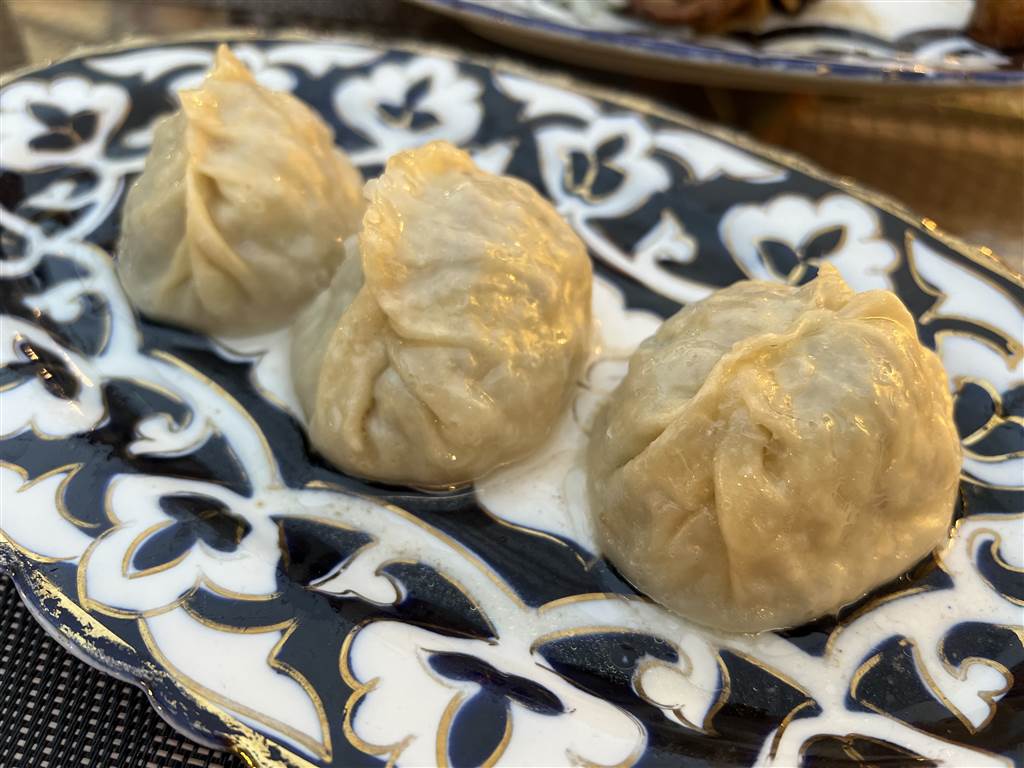
The manti is a steamed dumpling with stuffed ground meat. At some restaurants they would serve a vegetarian option of the manti, usually in pumpkin. I had the pumpkin once in our very last meal in Khiva and it was wonderful. I tend not to like ground meat fillings because even if it is ground beef, it comes with somewhat of a gamey taste. Pumpkin manti would have to do it for me.
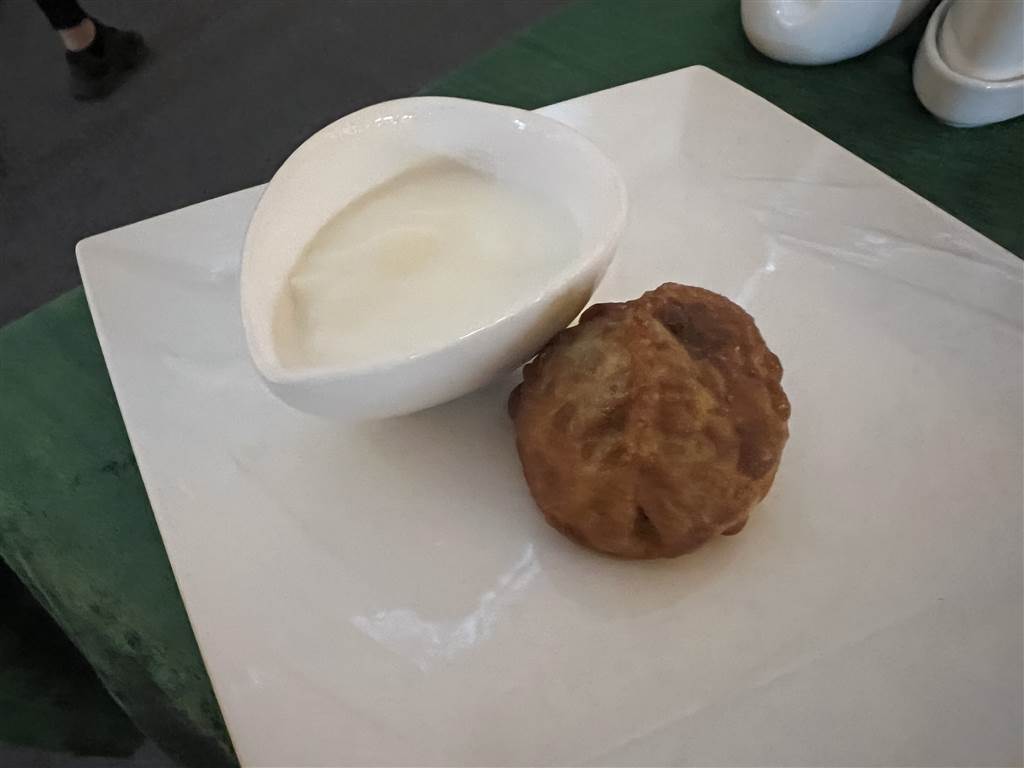
The Uzbek Dumpling (Chuchvara)
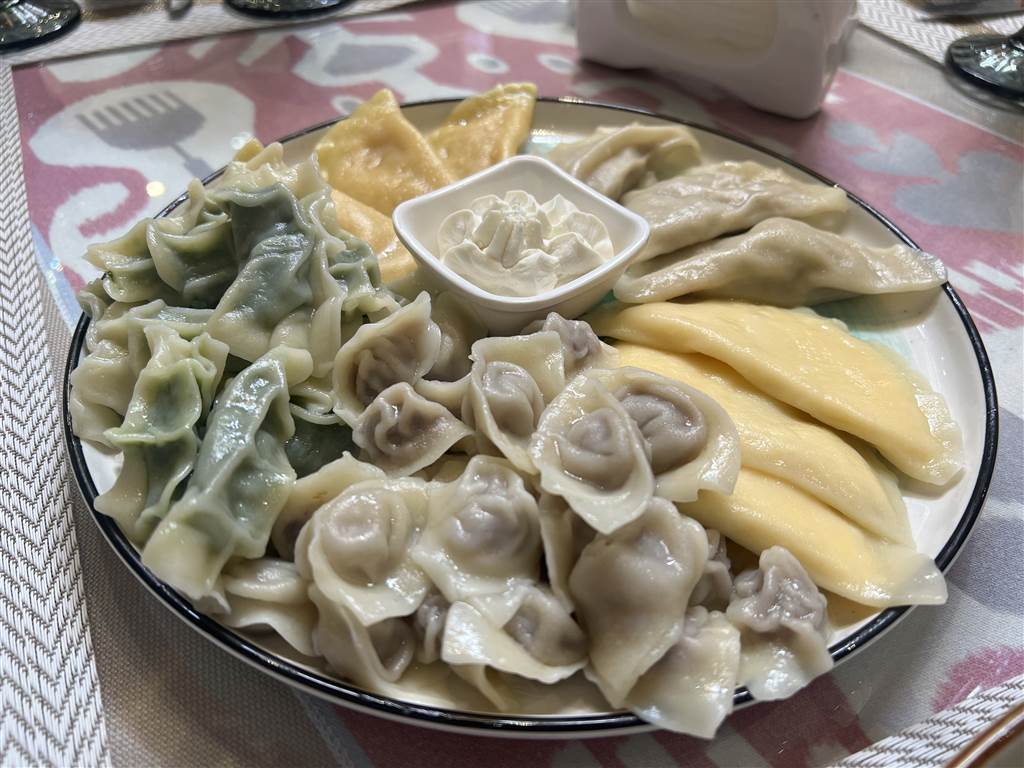
This type of Uzbek dumpling is slightly different from the big pocketed, meat-filled pouches of manti. This rendition of the dumpling is more similar to the well-wrapped smaller versions that we see in China. The filling is also ground meat, except that in Uzbekistan pork is never used. I did not have any trouble with the ground meat in these dumplings in Uzbekistan. It was also a nice reminder of my comfort food back home.

The Meyer Lemon

I saw Meyer Lemons for the first time in Samarkand’s Siab Bazaar. We could not resist and packed some home. The next morning, we squeezed this goodness into our tea. It was notably juicier than a lemon with a sweet flavor of the mandarin, as it is a cross between lemon and mandarin. Apparently, this breed is native in China, but I have never seen it before Uzbekistan.
The Green Noodles of Khiva
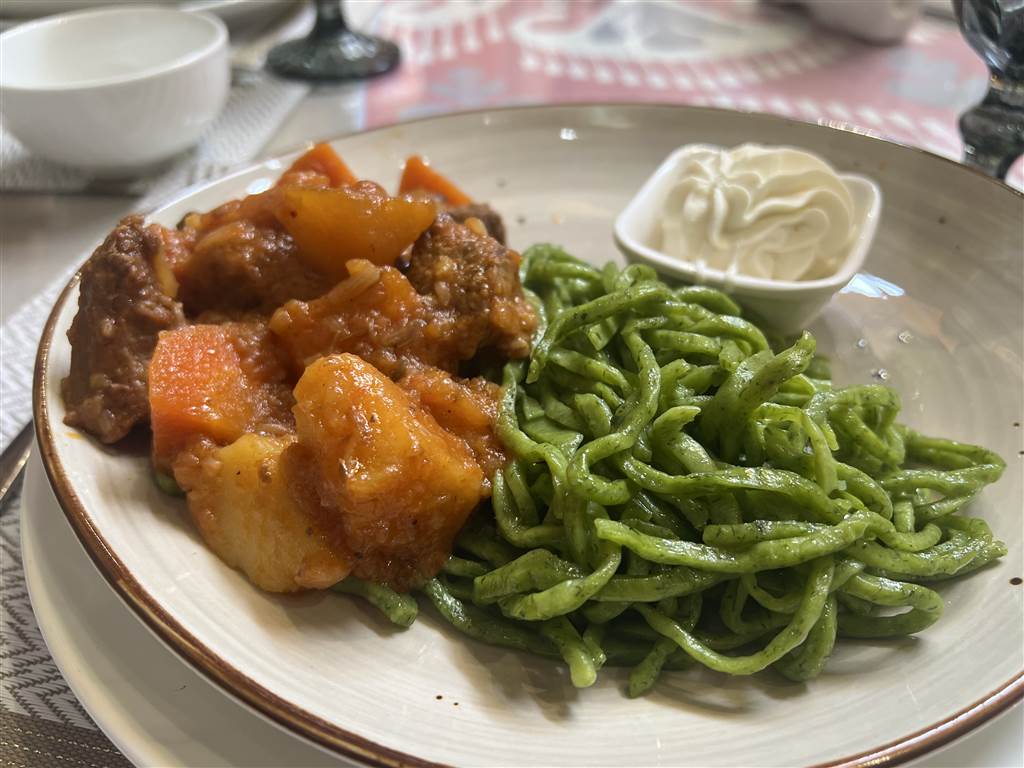
When we arrived in Khiva, we had our first meal at a heritage building. All the restaurants in Khiva serve a green noodle, with very strong fragrance of dill. I absolutely loved this noodle. It is usually served with a serving of meat on the side along with sour cream, and served dry instead of in soup.
The Honym
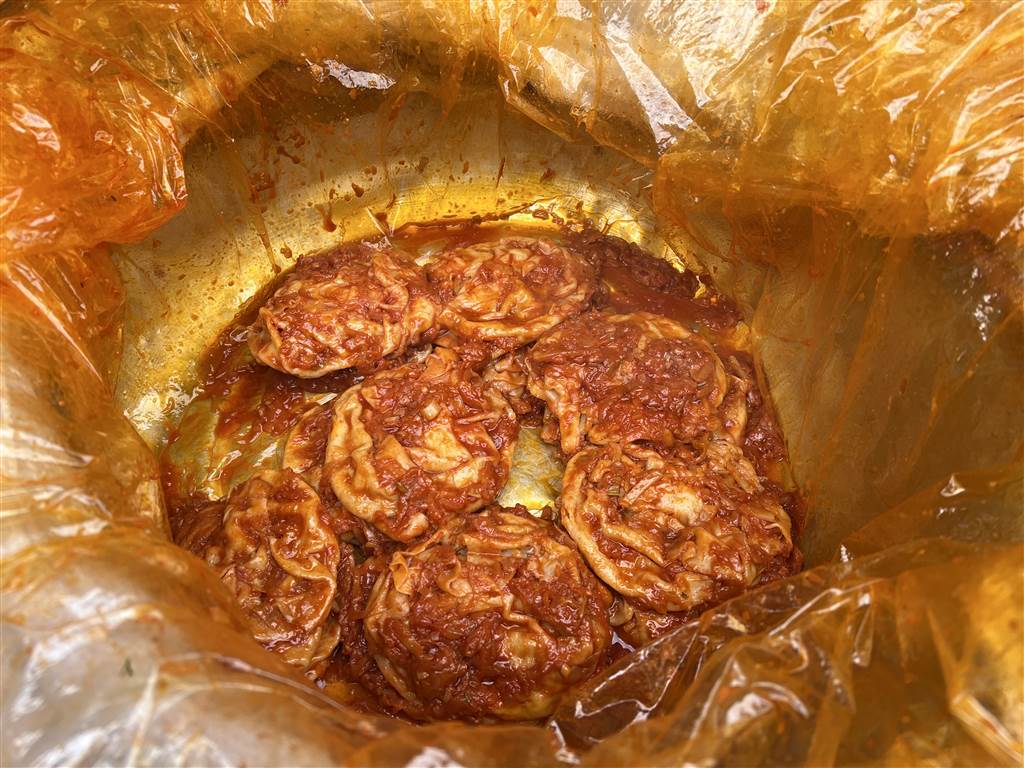
I learned my first Uzbek word at the Chorsu Bazaar in Tashkent, and it was the name of a food called Honym. The lady there told me that it is “Uzbek Lasagna” and that was quite true. It is a potato dough cooked in a rich and creamy tomato base and dished out piping hot.
The Herbal Tea
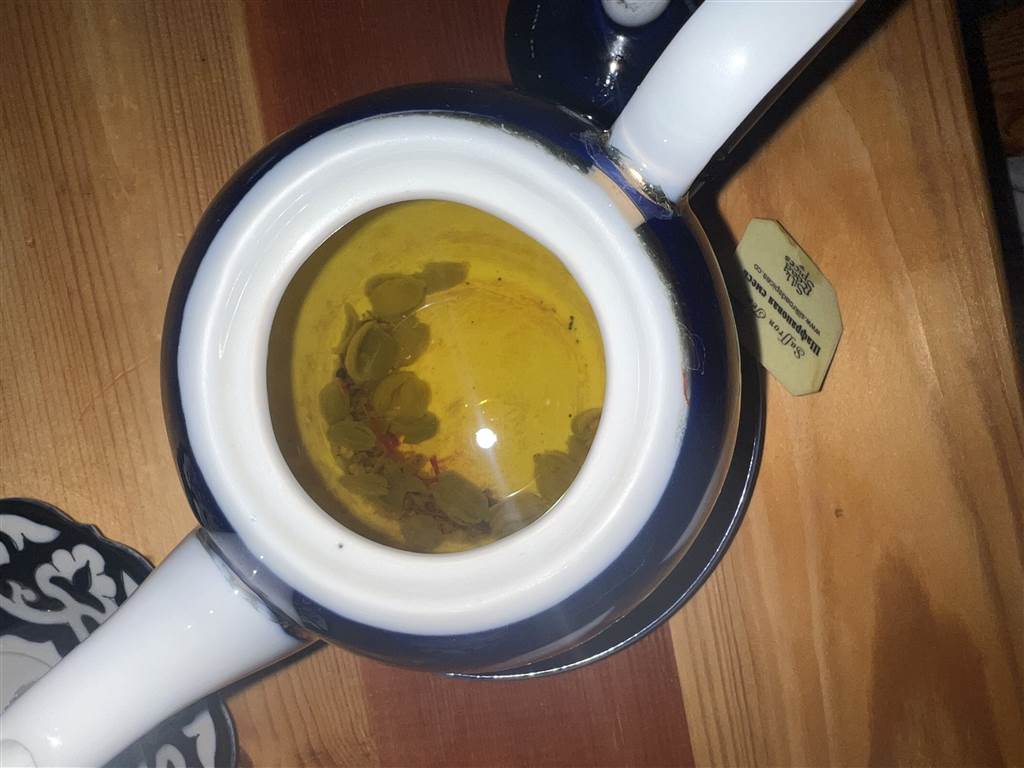
Tea culture is big in Uzbekistan, especially in Bukhara, where tea houses are everywhere like the cafés in western countries. I will discuss more about this experience in a later entry. For now, let me just introduce the herbal tea that I picked at the teahouse. I selected the cardamom and saffron tea, because saffron is the most exquisite spice in the world. The cardamom was a very spicy ingredient, and there is a natural streak of coolness and smoothness in the tea. I did not like sugar in my tea, but when drinking this tea a bit of sweetness to taper the spiciness was a good idea.
Finally, the Salad Dressing
In having our first dinner salad in Uzbekistan I noticed that the dressing was very good, with a touch of something that gave the salad a fuller body than the usual lemon juice / vinegar with olive oil combination. After a few bites, I figured that soy sauce was used in the salad dressing. The most common veggie combination for a soy-based salad dressing would be tomatoes, onions, eggplant and cucumber, with the very soul of the salad being fresh dill. This salad is served warm. I have replicated this when I went home and it is now a standard on my home salad menu.
At touristy restaurants, there is never a lack of western food to select from, and I have had some really good pasta and salads in Uzbekistan as well. I did, however, try to pick Uzbek local food to the extent that I could.
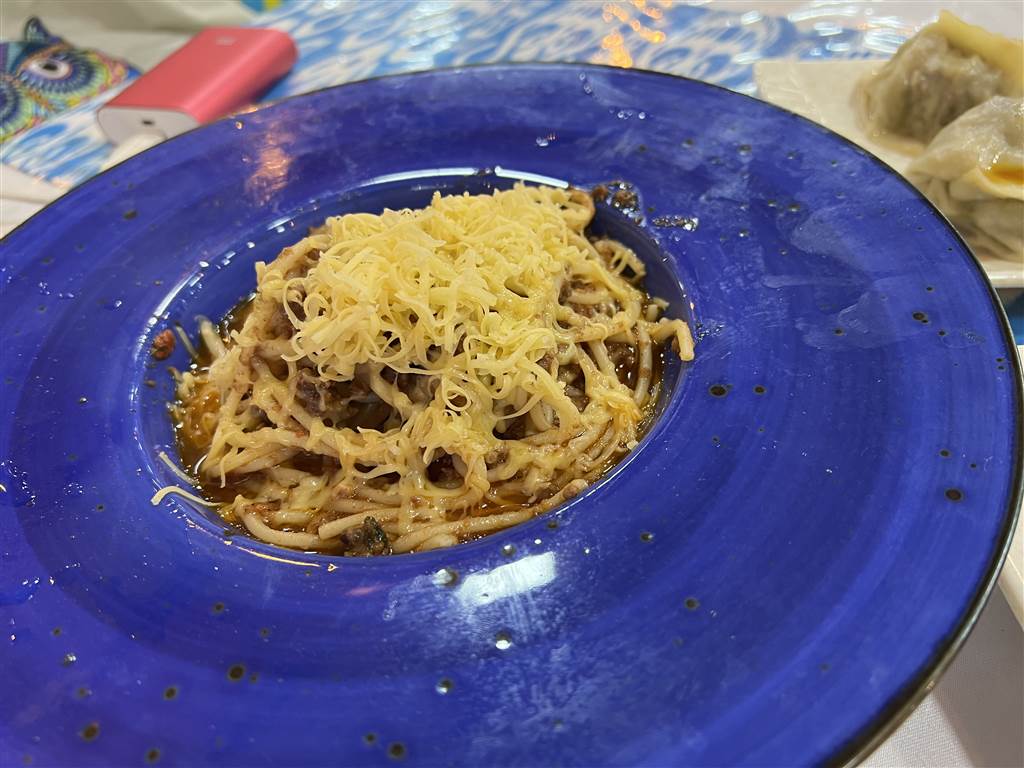
The dining experience I had in Uzbekistan was truly wonderful. I will always miss the shashlik. For my family’s souvenirs, I tried to replicate the Plov, the shashlik and the herbal tea. I could not handle making the Plov the Uzbek way, meaning cooking the rice in the pan itself, so I did it the “Chinese fried rice style” but with the standard spices that Uzbeks use. That was about as good as it gets for me.


